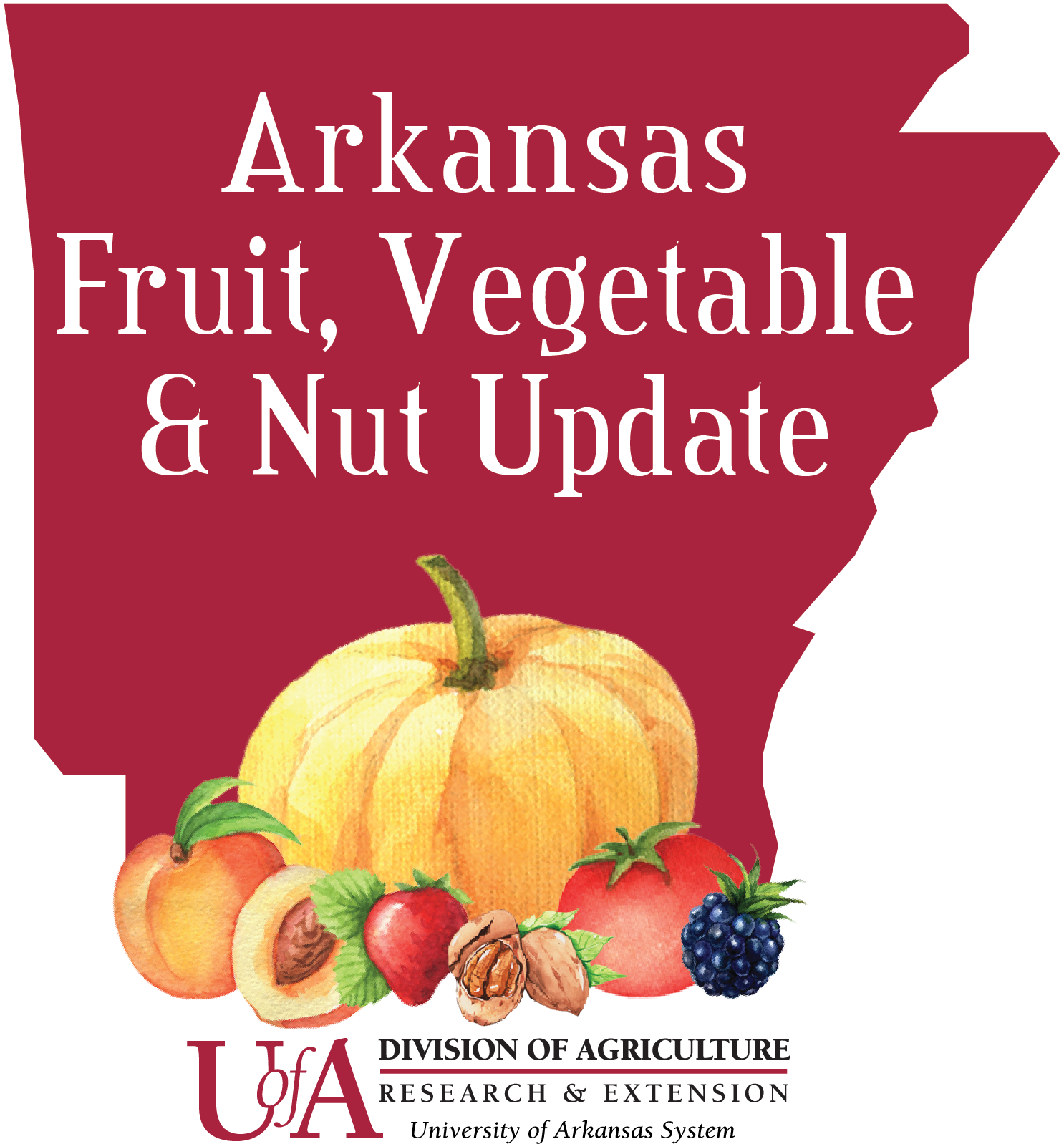
Our Number One Insect Pest of Pecan Is?????
Stink Bug: Monitoring and Management
It’s time to monitor for stink bugs in Pecan. Last year, besides pecan scab, this was the most damaging pest of pecan in Arkansas. Monitoring/management should begin when the pecans are in the water stage. Feeding in earlier stages can also cause damage such as pecan drop and blackening of the kernel. Last year stink bug populations peaked in mid-late June and mid-late August.
The plants surrounding your pecan orchard will influence stink bug populations. Stink bugs will favor feeding on the seed heads of grasses and weeds. These plants are very attractive to stink bugs and they will stay in these areas and reproduce. When they have depleted this food source, they will move into your pecans. If you can limit the amount of host plants around your orchard it will help manage the population. Many growers will mow frequently or plant cover crops like clover, which are both great ways to help manage stink bug habitat to help decrease the population.
Surrounding crops will influence stink bug populations in your orchard especially soybeans and other row crops harvested when pecans are at a vulnerable stage. It has also been noted that sometimes when adjacent fields of crops are sprayed (soybeans etc.) that adult stink bugs from those fields can move to another field, or your pecans. Keep open communication with your neighbors so you can be prepared to put out a spray if needed during crop harvest. Monitoring with pyramid traps can be very useful in these situations to stay ahead of this pest.
Pyramid traps can be used in numerous crops. They are hard to find ready to buy so here are some instructions on how to make them and use them to monitor stink bugs in pecan.
How to Construct a Homemade Stink Bug Trap
You will need:
- Yellow or Black corrugated plastic or plywood
- Plastic will last several years, but will need to be well anchored or your trap may blow away. Purchase corrugated plastic here: http://corrugatedplastics.net/4mmCorrugatedPlasticSheets.html or 888-350-7447
- If using plywood, make sure to paint all surfaces to protect from moisture. You can paint them either black or yellow. These should last a long time and are less likely to blow over.
- Window screen or mesh screen and a stapler.
- Steel rebar, or other means of attaching trap to the ground. We use four pieces of rebar per trap that are 4 feet long to hold the traps securely. This allows 1 foot or more to be driven into the ground.
- Binder clips/clothespins or similar device to secure screen upper to trap base.
Brown stink bug lure (you should also use a green stink bug lure if you have a problem with them, but brown is more common). Buy green and brown lures here: http://www.agbio-inc.com/dead-inn-pyramid-trap.html, http://www.agbio-inc.com/contact-us.html, or by phone 303-469-9598. You can also buy brown stink bug lures at Great Lakes IPM http://www.greatlakesipm.com/ or 800-235-0285.
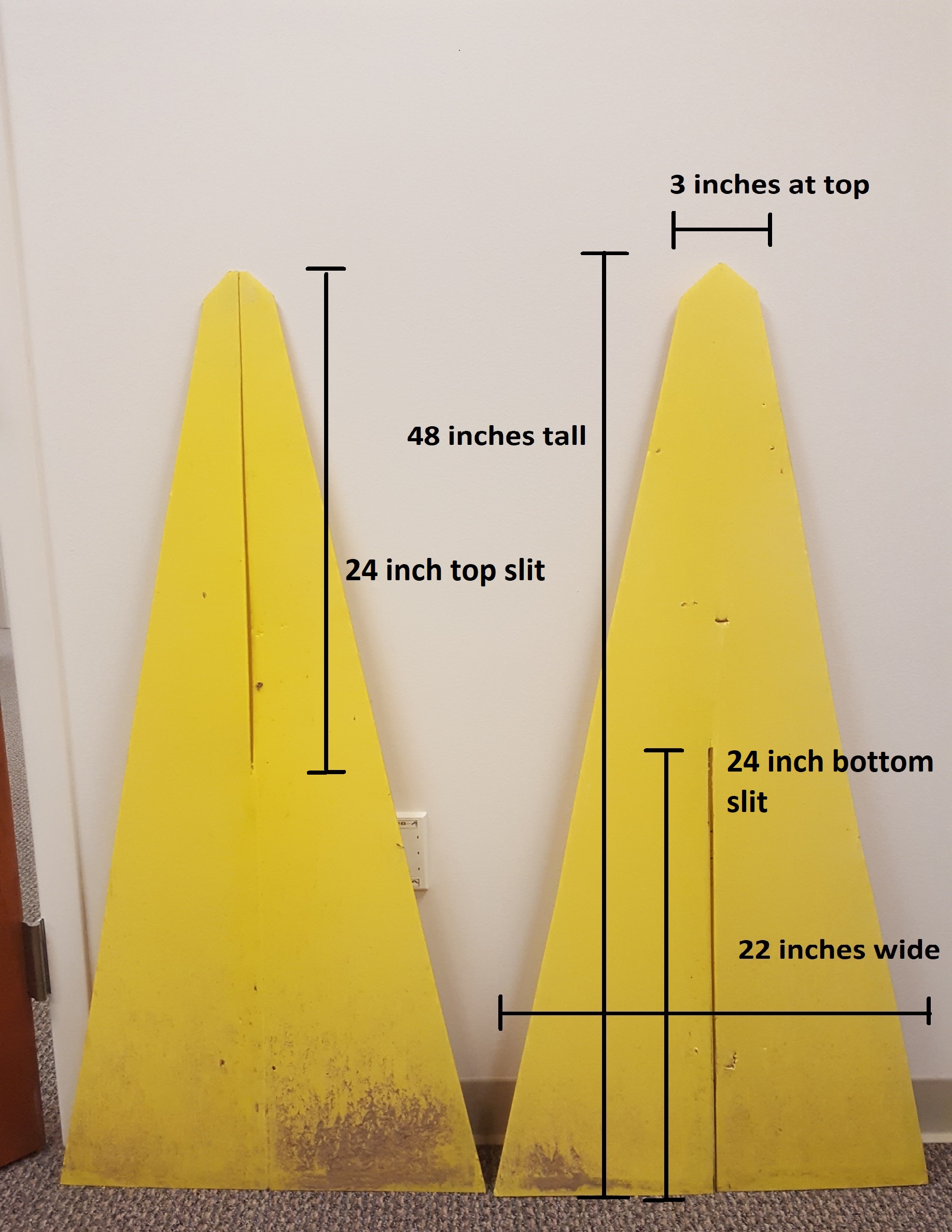
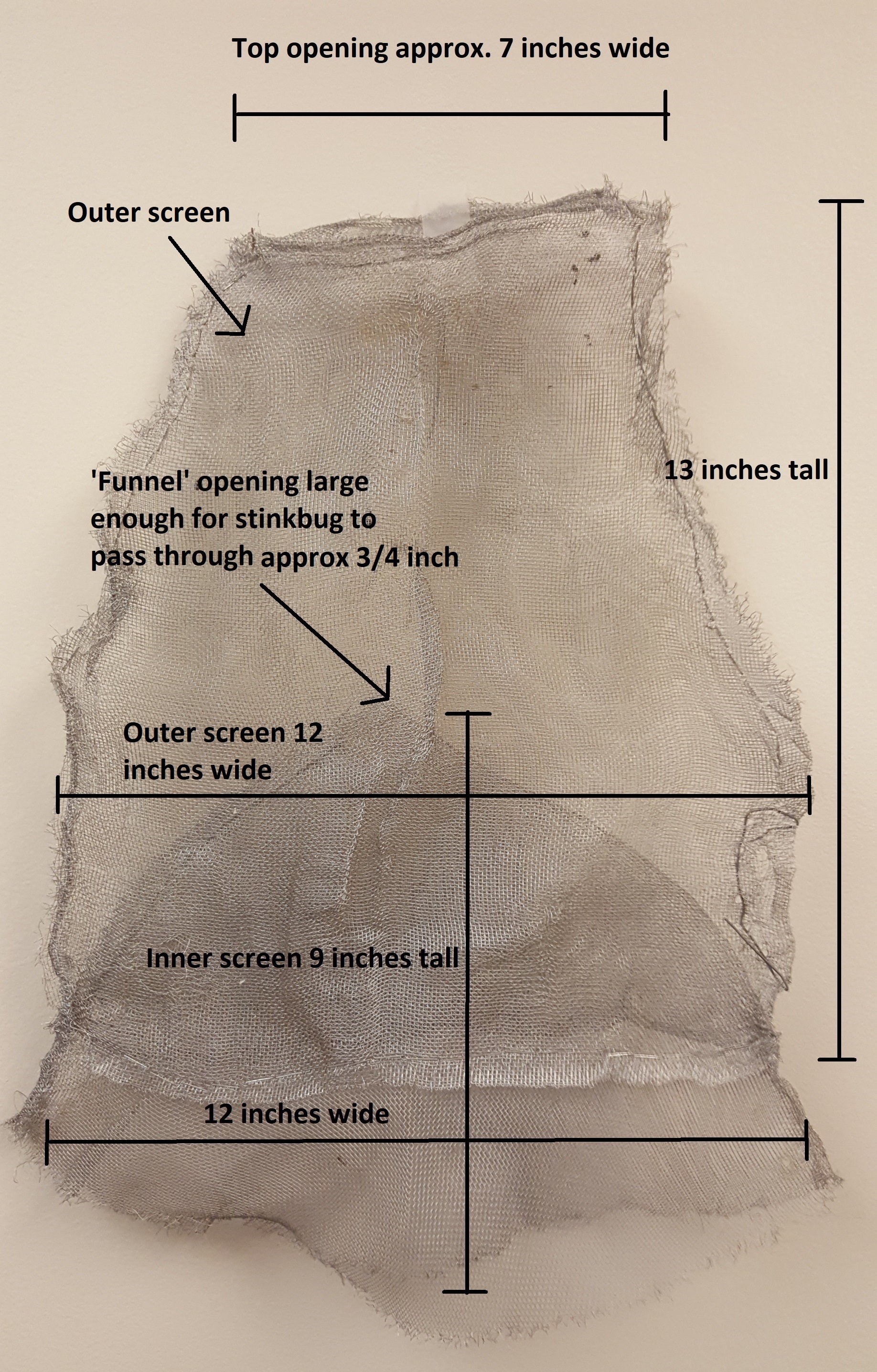
Figure 1. Yellow trap body sections with measurements and screen trap top with measurements.
How to Construct (Figure 1):
- Cut out the two trap body sections from corrugated plastic/plywood according to the dimensions in the above picture.
- Cut a slit vertically in each trap body section so they fit together and form a pyramid (look at finished trap below for reference).
- Cut out two sections of screen for the upper portion of the trap according to the picture and staple the sides together, leaving the top and bottom portions open.
- Cut out two sections of screen for the inner ‘funnel’ portion of the trap, or cut one piece and fold it over, stapling into a cone shape and leaving a hole at the top large enough for a stink bug to crawl through.
- Insert the cone portion of the mesh inside the upper portion and staple into place once centered.
- These dimensions are only guidelines, and small variations should be okay.
- When setting up traps in the field, attach the screen portion to the trap body with binder clips/clothespins/etc. on two sides.
- Roll down the top opening a couple times and clip to close.
- Pound 4 feet long rebar about 1 foot into the ground. Use four pieces to make a tight square and slip the trap into the rebar so that one side of the trap comes in between each piece of rebar. For maximum hold, attach the corners of the trap with wire to the rebar by punching a small hole in the plastic/wood of the trap base. This trap design has held up to wind quite well.
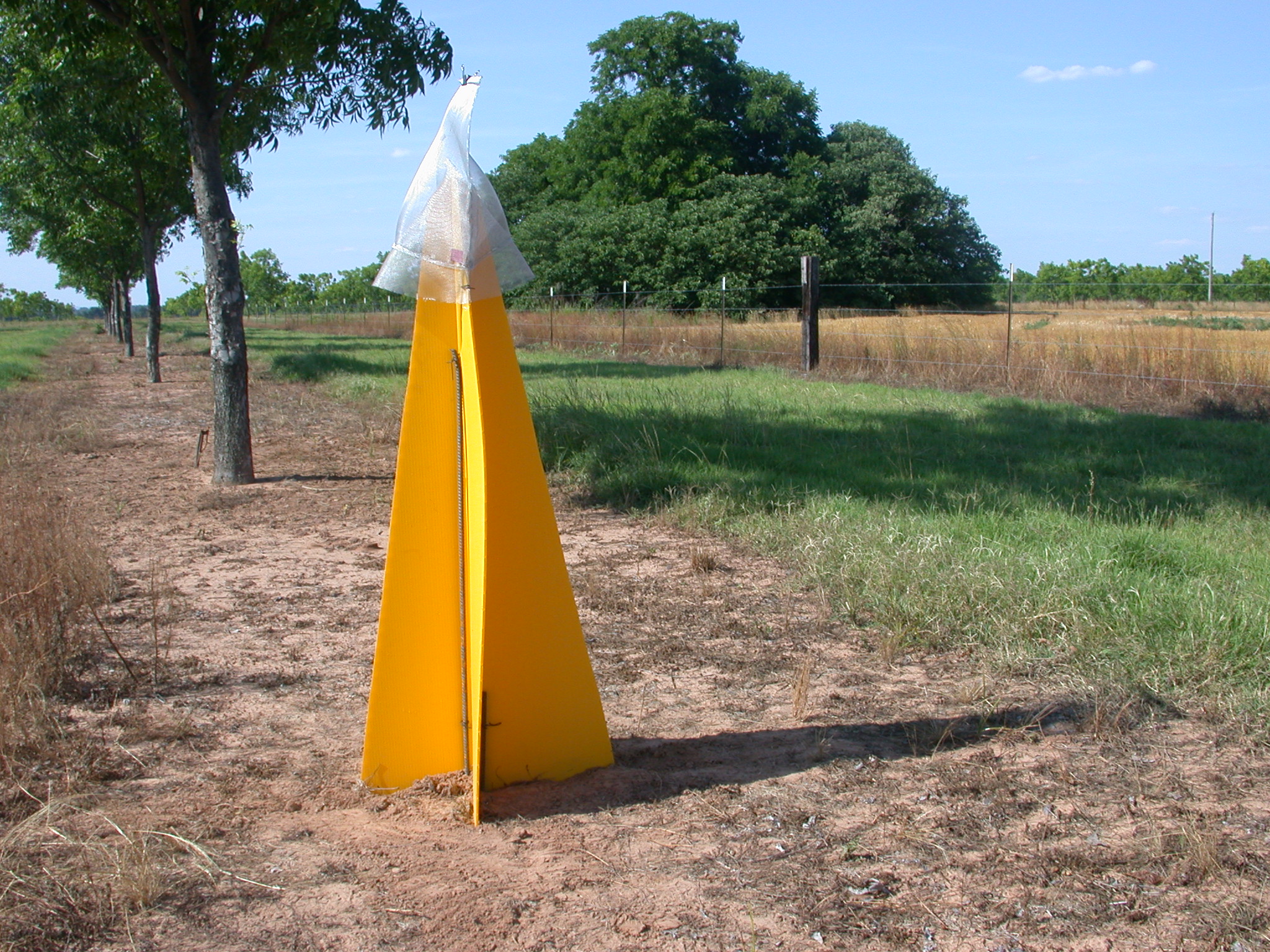
Figure 2. Stink bug trap installed at a pecan orchard.
Using your stink bug traps:
- You want three traps on each side of the pecan orchard and three traps in the middle.
- Traps should be at least 30 meters (approx. 100ft) apart.
- Check the traps weekly beginning at the water stage.
- We do not have a good economic injury level but have found that if you are finding stink bugs in the traps that damage is occurring in the lower canopy.
- Our current recommendations are to spray when you begin finding stink bugs and continue to spray at 10 day intervals through dough stage if you continue finding stink bugs. Consult our MP-144 for a list of products registered for stink bug management in pecans https://www.uaex.uada.edu/publications/pdf/mp144/d-pecan.pdf or pick up a MP-144 guide up for free at your local county extension office.
Commercial Trap Options:
- Commercial traps in the 4 foot size are available for purchase. These traps have a
plastic jug-like trap top and are available from Dead-Inn Pyramid traps
- http://www.agbio-inc.com/dead-inn-pyramid-trap.html or 303-469-9598.
- You can also purchase black pyramid trap bottoms at Great Lakes IPM and just make
screen tops yourself.
- IPM http://www.greatlakesipm.com/ or 800-235-0285.
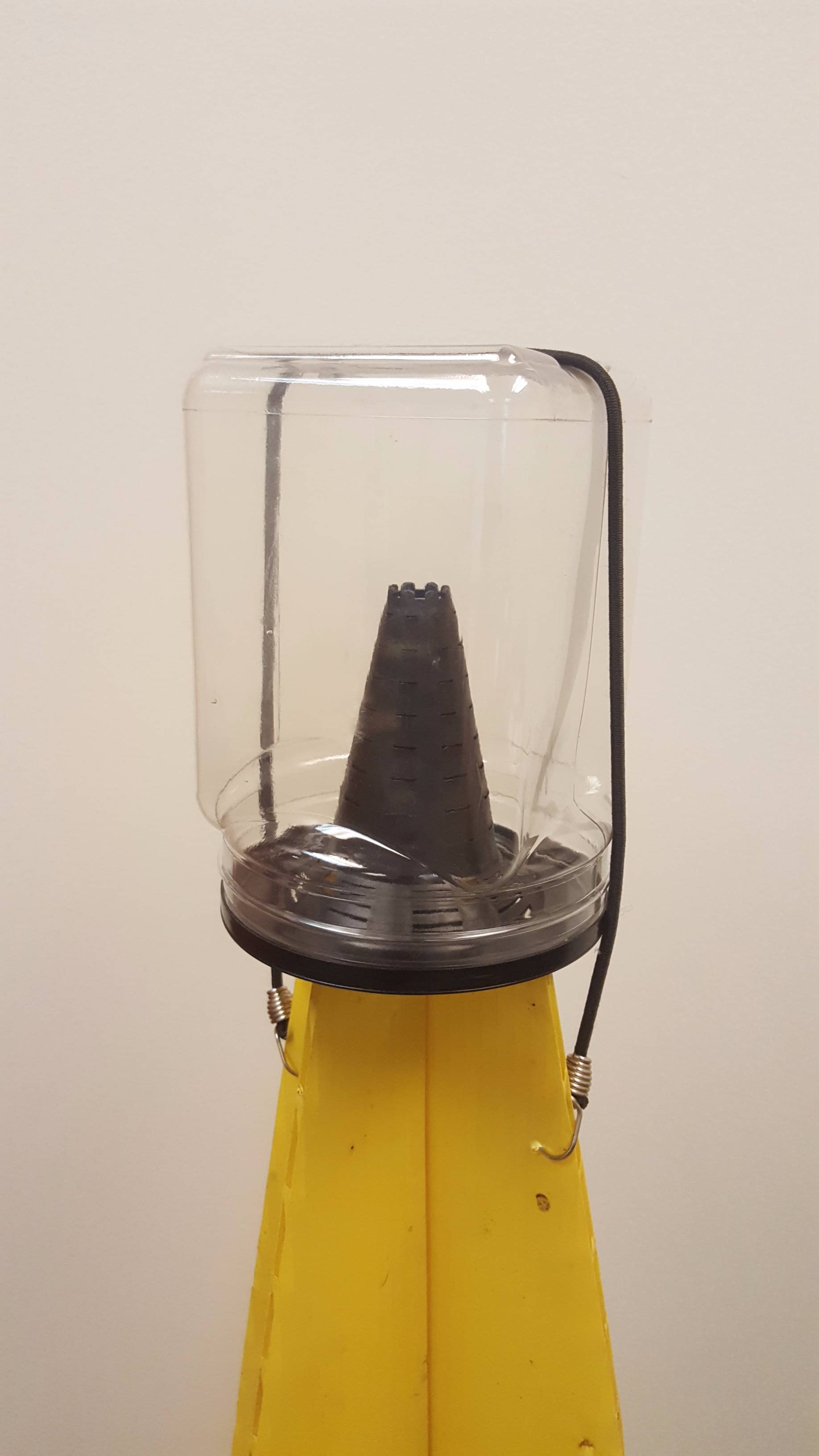
Figure 3. Dead Inn trap top.